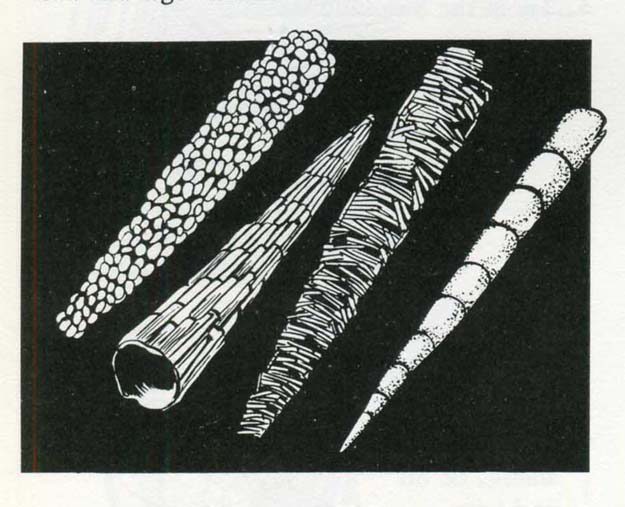Ted Andrews, Basic Flytying in Pictures, Londres, Stanley Paul, 1983, p. 78.
Unlike the snails which carries its home upon its back, the larvae of some species of sedge or caddis flies go one better. A case composed of minute pebbles or leaf fragments, twigs, etc., is built to completely envelop the body, leaving only the head and legs visible.
Anyone who has ever paused to examine examples of caddis cases can only marvel at the intricacy of their construction job.
- Run the waxed tying silk down to the bend and tie in a length of wool or floss. Return the silk to the eye and wind up a neat tapered body with the wool or floss, tie off and trim waste.
- Use a matchstick as a spatula and thoroughly coat the body of the fly with adhesive (I would recommend five-minute epoxy glue.)
- Small particles of gravel are sprinkled over the glued floss until the body is completely covered. Alternatively, strips of raffia in shades of brown and green may be used. When the body is dry, a small sparse hackle is added, imitating the legs of the larvae. Build up a head with turns of silk, whip finih and varnish.
